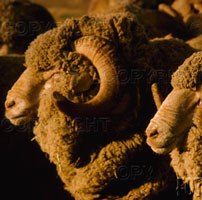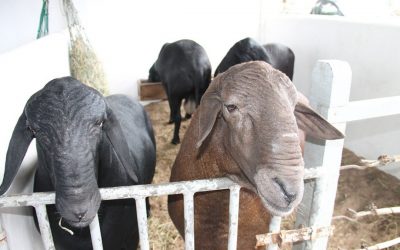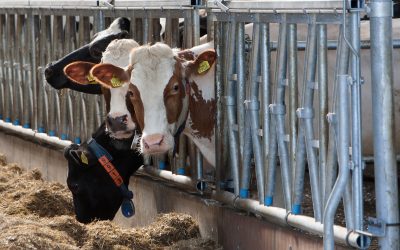Dietary salt increases wool growth

Increased dietary salt can increases wool growth across a range of diets, according to CRC Salinity scientist Dr Dean Thomas of CSIRO Livestock Industries. This suggests the potential use of salt-accumulating vegetation, such as saltbush, in a grazing strategy to increase wool production efficiency.
were individually penned and offered one of l6 different diets. The feeds were
formulated with four levels of added sodium chloride (nil, 7%, 14%, and 21%) and
four levels of organic matter digestibility (55%, 62%, 69%, and 76%). Treatment
feeds were offered ad lib for seven weeks and at maintenance during the final
week.
Results
Commenting on the results Dr
Thomas said “We found clean wool growth, corrected for digestible organic matter
intake, increased by 16%, 18% and 27% as added sodium chloride was increased by
7%, 14% and 2l% respectively. However, feed digestibility in sheep decreased
when added dietary salt was 14% or higher. The decrease in organic matter
digestibility was about 5% at the highest level of 21%. Liveweight gain was
reduced from 143 to 135 and 1 gram/day with 7%, 14% and 21% added dietary sodium
chloride, mostly as a result of reduced feed intake at the higher salt levels.
Sheep have an upper limit of about 200-250 gram/day in their ability to process
and excrete salt.”
Consistent increase
Dr Thomas
believes the study showed that diets high in salt can improve wool growth
efficiency independent of any effect on intake, and the increase in wool growth
is consistent across a range of diets differing in organic matter digestibility.
It remains to be determined whether a similar response exists for saltbush
forage, which can contain up to 30% salt as a proportion of dry weight. While
higher levels of dietary salt may be favourable for wool production efficiency,
the decrease in the voluntary feed intake of sheep clearly needs effective
management for commercial livestock production.
Dr Thomas added
that “Grazing systems that use increased dietary salt to increase the efficiency
of wool production would probably be expected to at least maintain animal live
weight. Should the trail results be duplicated on saltbush pasture, it is a
system whereby specialist wool producers could use to increase the profitability
of saltland pasture.”
Related website:
CSIRO











